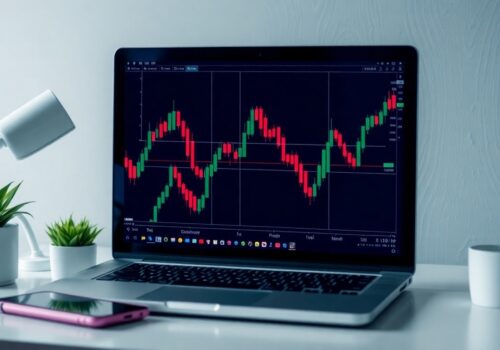Essential Reading for New Forex Traders: Where to Start and How to Organize It
Entering the forex market requires methodical preparation and organized knowledge management. Today’s traders access educational materials in various digital formats, creating personal libraries of essential resources. Many professionals convert reference guides from FB2 to PDF for better compatibility across devices during market analysis. This systematic approach to organizing trading literature helps beginners navigate the overwhelming volume of information. This guide outlines critical reading materials for new forex traders and provides effective strategies to structure your learning journey.
First steps in forex education
Beginner-friendly resources for day one
The forex journey begins with understanding market fundamentals. Start with “Currency Trading for Dummies” by Mark Galant and Brian Dolan, which breaks down complex concepts into digestible pieces. Follow this with Investopedia’s forex section, which offers free, comprehensive articles for beginners. Begin with one hour of focused reading daily to develop consistent learning habits and prevent information fatigue.
Essential terminology resources
A solid grasp of terminology accelerates your learning curve. “The Complete Forex Trading Course” by Independently Published offers a comprehensive glossary of essential concepts. BabyPips.com’s “School of Pipsology” provides interactive lessons with practical examples. This fundamental vocabulary foundation prevents misunderstandings that could lead to costly trading mistakes later.
Core reading categories for new traders
Technical analysis fundamentals
Technical analysis forms the backbone of trading decisions. “Technical Analysis of the Financial Markets” by John Murphy remains the definitive guide, covering essential chart patterns and indicators. For a more digestible introduction, “Getting Started in Technical Analysis” by Jack Schwager breaks complex concepts into practical applications. These resources help identify support and resistance levels, trend lines, and reversal patterns. Apply each new pattern to historical charts to reinforce understanding.
Psychology and risk management texts
The psychological dimension often determines trading success more than technical knowledge. “Trading in the Zone” by Mark Douglas addresses fear, greed, and developing a probability mindset. For risk management, “A Trader’s Money Management System” by Bennett McDowell provides concrete position sizing strategies. According to research, psychological factors account for approximately 80% of trading success, making this category essential for long-term profitability.
How to organize your forex reading journey
Creating a structured learning path
Develop a methodical approach by progressing from market mechanics texts to analysis methods, followed by psychology resources. Create a weekly reading schedule with specific timeframes for each learning phase. Document key concepts in a dedicated notebook. Consider dedicating different weekdays to different topics – technical analysis on Mondays and Wednesdays, fundamental analysis on Tuesdays, and psychology on Thursdays – to maintain consistent exposure across essential subjects.
“The key to trading success isn’t consuming more information, but organizing what you learn into an actionable framework.”
Progressive learning
Structure your reading journey in three progressive tiers:
- Tier 1: Core concepts and terminology (1-2 months)
- Tier 2: Strategy development and technical refinement (2-3 months)
- Tier 3: Advanced psychology and specialized techniques (ongoing)
Complete each tier before advancing to maintain a strong foundation. Revisit earlier resources periodically to reinforce fundamentals. This structure creates measurable progress benchmarks as you advance through increasingly sophisticated trading concepts.
Practical application of trading knowledge
Balancing theory with demo trading
Reading alone won’t make you profitable. Implement the reading-practice cycle:
- Study a specific concept
- Apply it on a demo account
- Journal observations and outcomes
- Review results against theoretical expectations
- Adjust understanding based on practical results
According to educational research, active learning methods improve retention rates by up to 75% compared to passive reading alone. Begin with 30 minutes of reading followed by one hour of deliberate practice for optimal knowledge integration.
Creating an effective study routine
Develop a sustainable routine that accommodates your personal schedule. Early morning study sessions before market open provide distraction-free learning. Create a dedicated workspace free from interruptions. Set specific, measurable learning objectives for each week. Track progress in a learning journal, noting questions for further research. Consistency trumps intensity – fifteen focused minutes daily proves more effective than irregular marathon sessions.
Avoiding information overload
Quality vs. quantity in trading education
Focus on depth rather than breadth. Master one trading concept before moving to the next. Select a limited number of high-quality resources rather than consuming everything available. Implement a “one in, one out” policy – finish a resource completely before starting another. This measured approach prevents burnout and enhances comprehension.
Verifying source credibility
Evaluate sources by checking the author’s trading background, looking for educational content not focused on selling systems, and verifying if strategies are based on sound principles. Prefer resources that discuss risk management prominently. Authors who acknowledge market complexities rather than promising quick riches typically provide more reliable information. Cross-reference concepts across multiple sources before incorporating them into your trading approach.
Conclusion
Building a solid educational foundation is critical for forex trading success. Organize your learning journey methodically, balance theory with practice, and maintain healthy skepticism toward information sources. Trading education is a marathon, not a sprint. Consistent application yields better results than frantic information consumption.
FAQs
Aim for 5-10 hours of focused reading per week. Quality matters more than quantity – ensure you fully understand concepts before moving forward. Supplement reading with practical application on demo accounts.
Not necessarily. Many excellent books provide comprehensive knowledge at a fraction of the cost. Evaluate courses based on instructor credentials and student reviews rather than marketing promises. Start with respected books before investing in expensive courses.
Focus on one book at a time, especially for technical concepts. This approach allows deeper understanding and prevents confusion. Complete foundational texts before exploring specialized topics.
Check publication dates and look for revised editions. While market fundamentals remain relatively constant, specifics about trading platforms and regulations may change. Supplement older classic texts with current online resources.
Understanding market history and basic economics provides valuable context for trading decisions. While not immediately applicable to day-to-day trading, this knowledge helps you recognize broader market patterns and anticipate potential currency movements.





